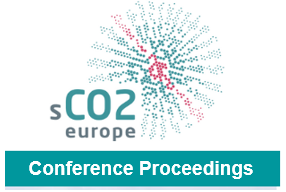Numerical investigation of a simple regenerative heat to power system with coupled or independent turbomachinery drives
Supercritical CO2 (sCO2) power systems have the potential to revolutionise power generation. Among the possible layouts, the simple regenerative cycle is the most essential, yet potentially the most competitive for an industrial uptake of the sCO2 technology at small-scales (<0.5MWe) in high-grade waste heat to power applications (>400°C). To compensate for the efficiency downsides due to the basic architecture, this study investigates how turbomachinery could improve the design and part-load performance of sCO2 power systems. With reference to the 50kWe High Temperature Heat To power Conversion facility (HT2C) available at Brunel University London, this research numerically assesses pros and cons of a radial turbine and a compressor being simultaneously or independently driven. Two turbine designs with nominal total-static efficiency of 75% were developed using a mean-line methodology which further allowed to retrieve the operational and efficiency maps. These maps were later implemented in a one-dimensional simulation platform of the HT2C facility calibrated against equipment data. The differential performance of the coupled and independent turbomachinery drive solutions was assessed with reference to a broad range of industrial heat input conditions in terms of mass flow rate and temperature of the flue gas. The results show marginal benefits at design conditions due to the same turbine design specifics. The independent drive solution leads to worse performance for part load conditions below the nominal one. On the other hand, the dual optimisation of compressor and turbine speeds allows substantial benefits above the design point, particularly for deviations of the flue gas temperature. At 110% of the nominal heat source temperature, the independent drive solution increases the net thermal power output by 27%, namely from 75kW to 95kW. This is primarily due to a higher mass flow rate in the sCO2 loop as well as a slightly higher pressure ratio.
Vorschau

Zitieren
Rechte
Nutzung und Vervielfältigung:
Dieses Werk kann unter einer Creative Commons Namensnennung 4.0 Lizenz (CC BY 4.0)
Creative Commons Namensnennung 4.0 Lizenz (CC BY 4.0)
genutzt werden.
